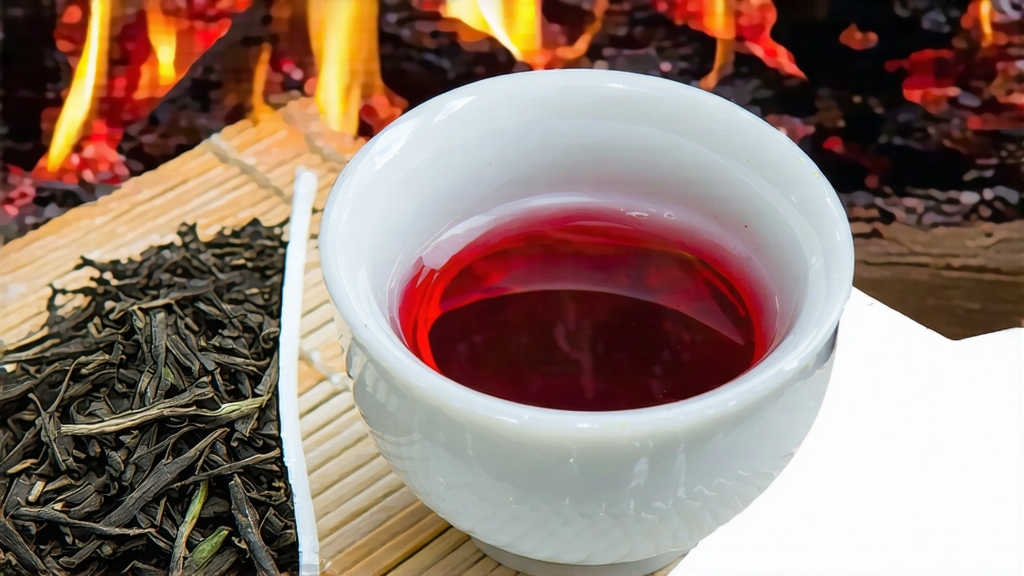
Ask most tea lovers to name China’s oldest black tea and they will answer with the same four syllables: Lapsang Souchong. Born in the precipitous Wuyi Mountains of northern Fujian, this is the cultivar that launched the entire genre we now call “black tea” (or, in China, “red tea”). From its seventeenth-century debut on the wharves of Amsterdam to its modern incarnations that perfume the cup with longan and pine resin, Lapsang Souchong has never stopped evolving, yet it still carries the smoky signature that once seduced the courts of Europe. This article invites the international reader to explore the leaf’s turbulent history, its two stylistic families, the meticulous craft that turns fresh buds into aromatic twists, and the gongfu rituals that coax the most nuanced flavors from what many wrongly dismiss as merely “campfire tea.”
1. Historical backdrop: how a Qing-era mishap became global commerce
Local legend fixes the birth year at 1646, when a passing Qing army commandeered Tongmu Village and delayed the spring harvest. Eager to dry the piled leaves before mold set in, farmers rushed them over freshly cut pine fires. The resulting dark, glossy strips, impregnated with smoke, were offered to Dutch traders at the port of Xiamen. Europeans adored the assertive cup, and by the early eighteenth century “Bohea Souchong” (the old trading name) commanded higher prices than green tea in London. The East India Company copied the style in Assam and Ceylon, seeding the black-tea plantations that still dominate world markets. Thus, a mountain accident became the template for every breakfast tea on earth.
2. Terroir and cultivar: why Tongmu tastes like no other place
Tongmu lies inside a national nature reserve where the Min River cuts granite gorges shrouded in mist 240 days a year. Day-night temperature swings of 15 °C slow leaf growth, concentrating amino acids and volatile oils. The indigenous cultivar, Xiao Ye Zhong (“small-leaf species”), develops thick cuticles that absorb smoke slowly, preventing harshness. Soils are acidic, rich in quartz and humus, draining rapidly so that roots dive deep for minerals. These factors create the honeyed “rock rhyme” (yan yun) that underlies even the smokiest grades.
3. Two stylistic branches: smoked versus unsmoked
Western markets know only the pine-smoked version, but connoisseurs increasingly prize the unsmoked style, called Zheng Shan Xiao Zhong. Both start with identical plucking—one bud and the first two leaves—but diverge at the firing stage. Traditional Lapsang is dried over resinous Masson pine in two-story wooden sheds; the smoldering logs lie in channels beneath bamboo trays, bathing the leaf in cool, fragrant smoke for up to twelve hours. Zheng Shan Xiao Zhong, by contrast, is withered over gentle charcoal heat derived from local hardwoods, yielding a cup that is malty, raisin-sweet, and utterly free of smoke. Each expresses the same terroir through different aromatics, much as peated and unpeated whiskies speak of Islay.
4. Craftsmanship step by step
Plucking begins at Qingming festival when the bud reaches 2.5 cm. Leaves are laid in bamboo troughs and withered for 8–10 hours as mountain breezes reduce moisture from 75 % to 58 %. Rolling follows: 70-minute cycles in a cast-iron drum set to 38 rpm, breaking cell walls without shredding the strip. Oxidation is brief—just 2.5 hours at 24 °C and 85 % humidity—preserving a reddish-orange rather than mahogany leaf. The critical smoking phase uses 40-year-old pine roots, split to expose resin-rich hearts; temperature never exceeds 80 °C, preventing tarry off-notes. Finally, the tea is sorted by hand into six grades, from the wiry “Special Pinhead” to the broader “Pekoe Souchong.”
5. Grading lexicon for buyers
- King Grade (特级): 0.4 cm tips, glossy jet, 95 % whole leaf, liquor like Burgundy.
- Pinhead (小种):